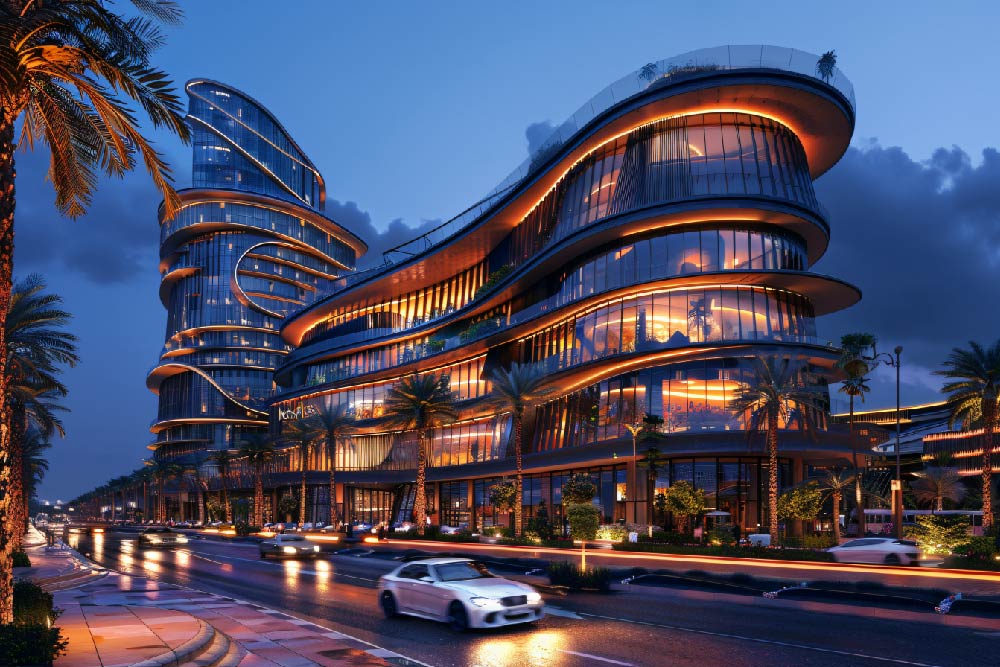
In today’s commercial real estate environment, return on investment is defined by more than just rental yield. It reflects a deeper calculus, one that accounts for asset grade, lease structure, tenant quality, and long-term resilience. As institutional capital becomes more selective and compliance benchmarks tighten, high-end commercial spaces have emerged as the most credible vehicles for durable, risk-mitigated growth.
For investors seeking stable income, long-term value preservation, and institutional-grade performance, high-end commercial real estate has become a core component of performance-led portfolios. As the fundamentals of ROI become more layered, it is essential to break down the individual factors that shape returns in high-end commercial assets.
What Drives ROI in Commercial Real Estate?
The ROI of a commercial property is a product of several interlinked variables. Some of the core indicators include:
- Escalation clauses: Structured rent growth over time
- Vacancy risk: Downtime between leases and tenant turnover
- Exit potential: Resale value and REIT-readiness
- Rental yield: Recurring income relative to capital invested
According to Business Standard, commercial office assets in India offer yields of 5-7%, significantly outperforming residential properties, which hover around 3%. This spread forms the baseline of return, but in high-end office spaces, ROI is built on much more than yield. The next layer of ROI is influenced by the quality and grade of the asset, and this is where ‘relevant-grade’ commercial spaces emerge as clear outperformers.
The Role of Asset Grade in Return Potential
Over the last few years, a new benchmark has come to define premium commercial assets, relevant-grade. These are not just modern offices, they are future-ready spaces that exceed standard Grade-A specifications on every front. According to JLL, as of H1 2024, India’s top seven cities had approximately 465 million sq. ft of relevant-grade stock, forming 56.3% of the total Grade-A inventory. These properties command a 19.8% premium, with average rents at ₹92.4 per sq. ft/month, a clear indicator that occupiers value quality and are willing to pay for it.
What sets ESG-compliant commercial assets apart:
- Smart systems: Digital access, energy-efficient HVAC, and building automation
- Sustainability: LEED or IGBC certification, water and waste management
- Efficient design: Flexible layouts, better ventilation, and employee-first planning
- Integrated ecosystems: Cafeterias, wellness zones, EV stations, and flex work areas
Along with asset grades, the structure of tenancy and income continuity are equally decisive in realising long-term ROI./p>
Lease Structures and Tenant Quality: The Hidden Engines of ROI
Premium commercial spaces are defined not only by where they are or how they look, but who occupies them and under what terms. In high-grade assets, tenants are typically from IT, BFSI, global consulting, or GCC sectors. These organisations:
- Enter into longer lease agreements, ensuring prolonged income visibility
- Undertake significant capital outlay on interiors and fit-outs, increasing lease stickiness
- Require scalable, compliance-ready infrastructure that aligns with global operational standards
For investors, this translates into several advantages:
- Predictable income growth through pre-agreed rent escalations built into multi-year lease contracts
- Low vacancy exposure, driven by long-term tenant commitment and limited churn
- High tenant retention, ensuring continuity of cash flow with minimal downtime between leases
These factors also make relevant-grade leased assets REIT-compatible, offering greater liquidity and exit potential, an increasingly important consideration for private and institutional investors alike.
Why 2025 Is a Strategic Entry Point for Investors
India’s commercial office sector is undergoing a structural shift. ESG benchmarks, design innovation, and tenant expectations are converging to define a new era of real estate development. And 2025 CRE investment trends present a timely opportunity to enter high-grade commercial markets.
Here’s why:
- Developers are launching strata-sale and lease-ready assets across top urban corridors
- Demand from sectors like Global Capability Centres, flex workspaces, and BFSI continues to rise
- Global tenants are aligning portfolios to ESG-compliant commercial assets, making relevant-grade the default standard
This shift is also reflected in the nature of upcoming inventory. Projects such as the upcoming Trump World Center in Pune, a 1.6 million sq. ft. branded commercial development, are offering both for-sale and leased formats (TOI). It reflects the growing alignment between global investment preferences and India’s evolving commercial inventory.
With future supply increasingly focused on premium office space investment and ESG-aligned assets, investors who enter the market at this stage are well-positioned to capitalise on a cycle defined by resilient income, sustained occupier demand, and long-term value creation.
At SQUAREA, we help you align your capital with future-ready commercial assets that are graded for performance. Whether your goal is to acquire leased institutional assets, invest in premium strata offices, or explore ESG-compliant office campuses, we provide tailored investment access backed by in-depth research, location strategy and asset due diligence.
Connect with us at hello@squarea.io or call +91 90 9641 9641 to unlock the ROI of high-end commercial real estate—strategically, securely, and successfully




